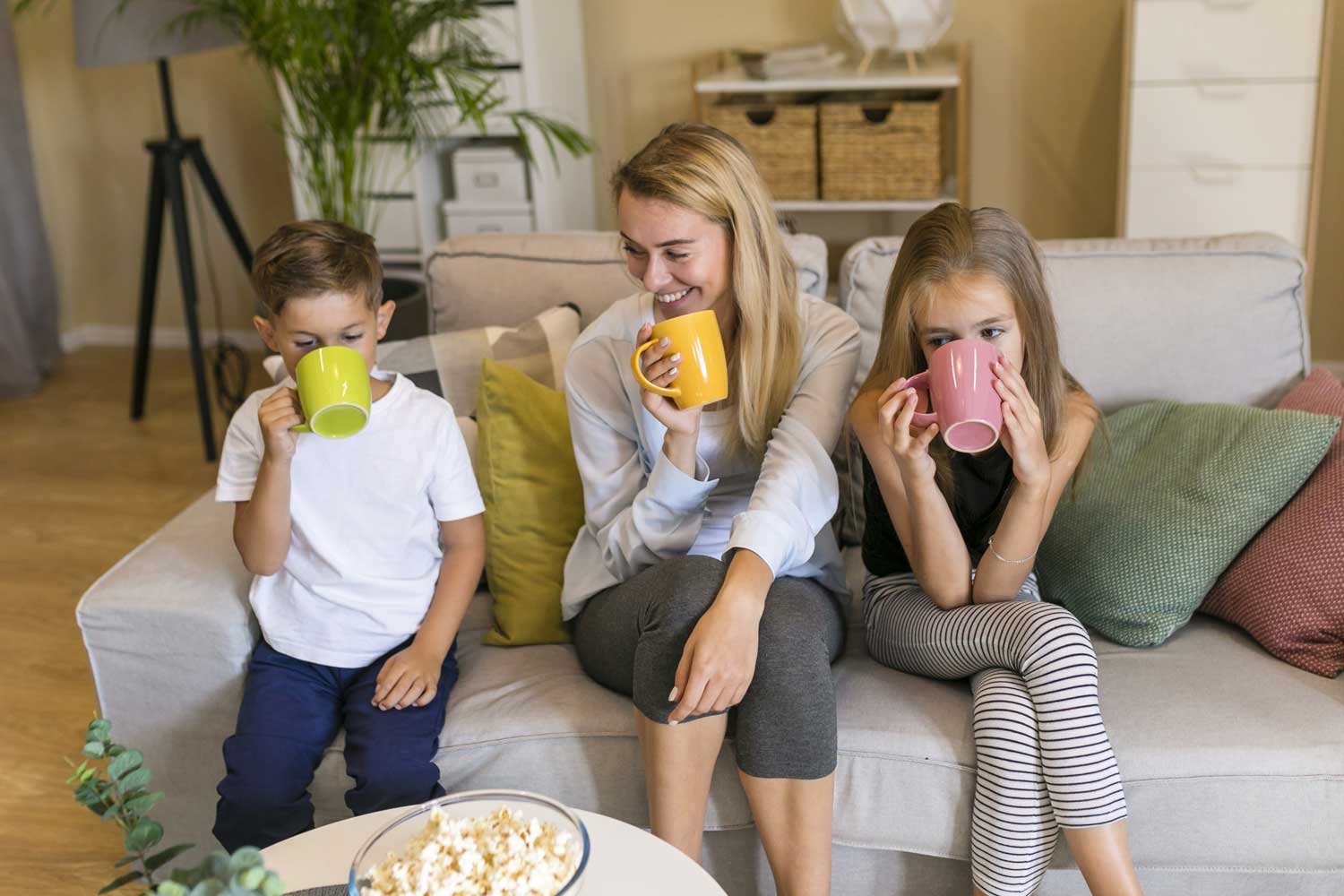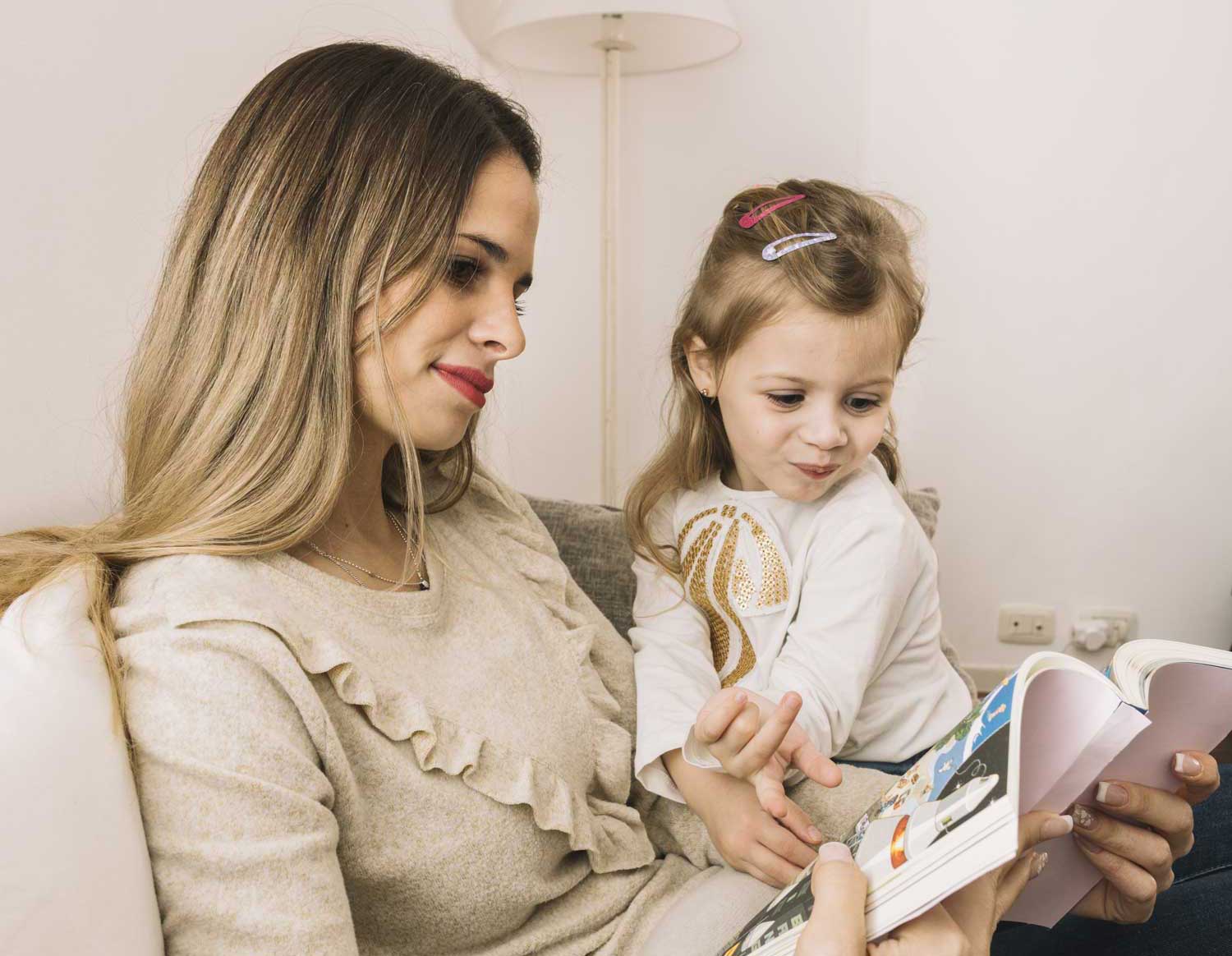One positive aspect of this pandemic is that it has given me extra quality time with my daughters, who are 1 and 3 years old. Back when things were “normal”, we were constantly in a rush. Rush to make lunches, rush to daycare, rush to work, rush to pick-up, rush home, and rush to bed. This time has afforded me the ability to stop and soak in every moment of their development and growth. At first, I was a bit overwhelmed by this transition to a full time stay at home mom. How was I going to get some work done, and still be present for them? I was not so sure but after a few days of being home I thought back to my “normal day” in the clinic. At the clinic I play. I play all morning, and sometimes the afternoon too, with my clients. Once I was able to get over my initial panic, I have found so many ways to reflect and incorporate language and imaginative play into our everyday lives, which is what I typically do with my clients. It’s funny how sometimes we are so used to doing something in one place and then get stuck for a minute when we have to do it somewhere else. What’s that called?… generalization? Ah yes, adults struggle too. In any case, after many play sessions later, I wanted to share some insight about the benefits of pretend play and how to incorporate this easily into your home as well.
One rainy day at home, my older daughter, Brinley, and I decided to go “camping.”
The first challenge we had to figure out was what we were going to use for our tent. There are so many options for this at home! Some ideas you can use are pillows and blankets, set up a real tent indoors if you have one, or use cushions. We have a soft padded mat called the Nugget which conforms to many different configurations, so we decided to make our tent using this. I will say resist the urge to come up with the plan for your child. Giving them the chance to plan, compromise, shift, and be creative builds the groundwork for important executive functioning skills later on.
The next thing we wanted to do was “build our fire.” Some ideas include using construction paper, toilet paper/paper towel rolls, or blocks. After brainstorming together, we chose to use orange, yellow and red Lego blocks to resemble fire colors. We pretended to roast marshmallows over the fire and keep our hands warm by holding them near, but not too close. We didn’t want to get burned after all! Sharing an imagination is so important for overall social communication, working together as a team and creating new ideas.

Our next activity was making some real hot chocolate and smores. We worked together in the kitchen to sequence the steps to make the hot water, pour the packet into the mug, combine them and then add the marshmallows. Next, we gathered the different ingredients to make the smores. We set up our graham crackers on a plate, put some chocolate chips and mini marshmallows on top, microwaved them a little and then added the other graham cracker. Then we talked about some other ideas of how we could have made smores, including using pretend ingredients, and discovering multiple ways to get to the same outcome. Sequencing tasks at a young age are vital to developing temporal concepts such as first, next, then, last. It can be fun to follow the child’s lead after a few sequencing tasks to see what their plan ends up looking like. We also incorporated concepts such as “too much” or “not enough,” which helps expand vocabulary. This was a messy yet fun play activity together.
There are so many great stories to support themed activities. For our day, we chose to read: Scaredy Squirrel Goes Camping, Pete the Cat Goes Camping, and Llama Llama Loves Camping. Some other good camping books for children are: A Camping Spree with Mr. Magee, Amelia Bedelia Goes Camping, and Penny & Jelly Slumber Under the Stars.

Literacy is the best skill to model for children. Listening to stories provokes questions from the little ones and allows us to ask them a variety of wh- questions along with higher level inferential questions. It also provides them an opportunity to make smart guesses and to learn and use new vocabulary words. You don’t need to stick to just the words on the page. You can also create your own story together just by looking at the pictures. If you don’t own the books you’re looking for, there are a lot of free resources online that you can use as well such as your local library website, YouTube, Vooks, and Storyline Online.
When we are ready to wrap up our day and head to bed, this is a great opportunity to target their recall and delayed memory. This is similar to the way I end my therapy sessions. By asking probing questions about what we did during the day, along with asking about specific details, it gives us an opportunity to see how they retained information from our day. It also allows us to fill in the gaps for them, reinforcing newly discovered language and vocabulary.
All of this simulates what happens in one of my therapy sessions with my clients who are learning about language and being social. There are so many opportunities embedded in this one lesson. Pretend play is so important for young developing minds. Hope you enjoy the idea as much as we did! We can’t wait for our next pretend adventure!

